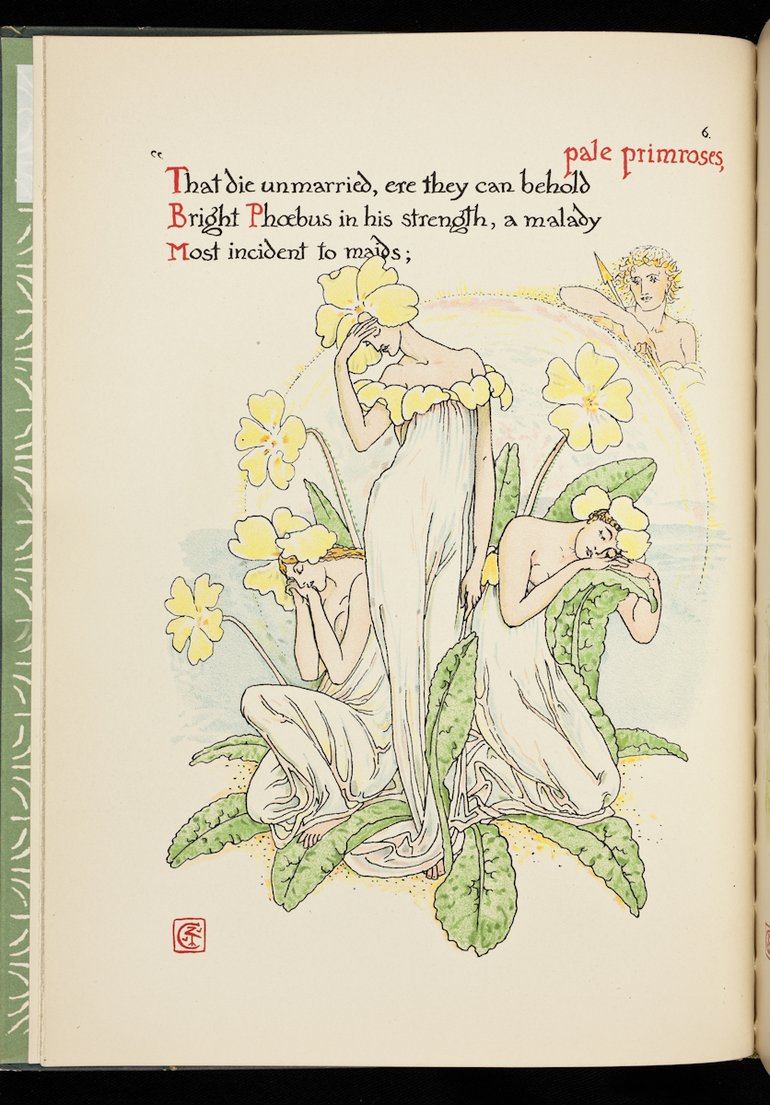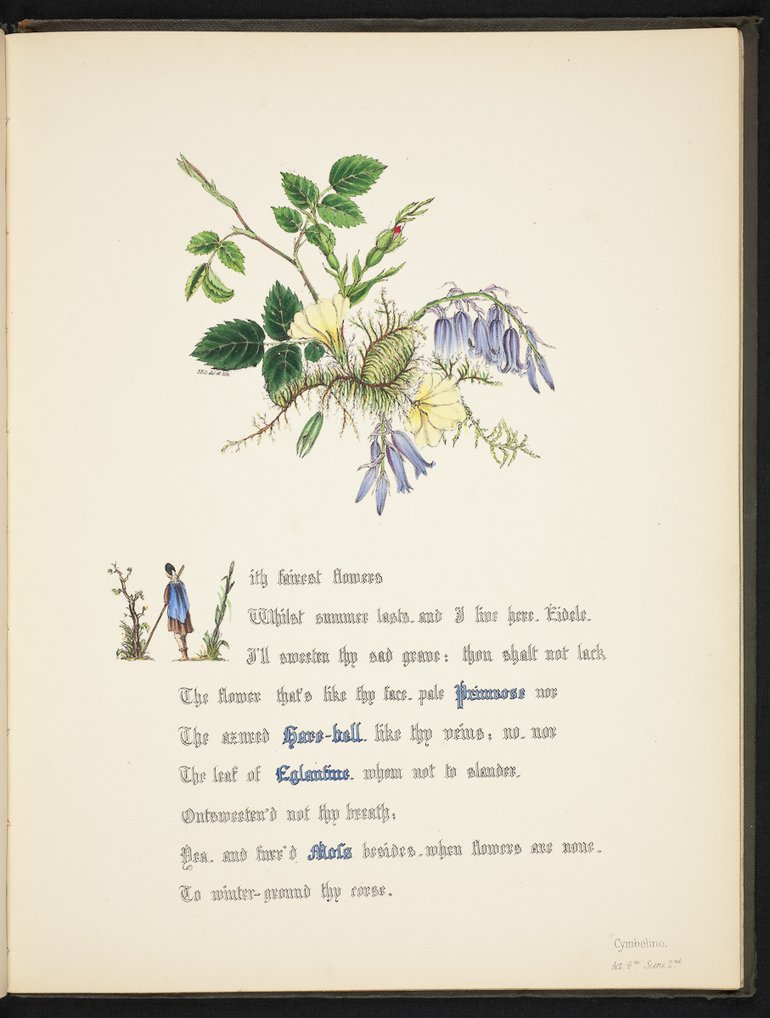There are many legends and myths about primroses. According to a Scottish legend, if you want to see a fairy, you must eat a primrose. Leaving primroses on your doorstep will ensure fairies will bless your house, and putting primroses in a cowshed will convince them not to steal the milk. Not surprisingly, the flower is also known as “fairy cup”. Celtic Druids believed the flower helped ward off evil spirits and could connect us with the fairies.
There are over 400 species of the perennial primroses in an array of colours, including white, blue, pink, red and yellow. The name primrose derived from the Latin Flor di primavera, meaning the “first flower of spring.”
This little flower has not only culinary but many medicinal benefits too. According to Tudor herbalists, Culpeper and Gerard, the primrose could cure ailments such as arthritis, insomnia, headaches and wounds. In his Herbal published 1597, Gerard recommends primrose tea “for curing the phrensie” (a violent mental or emotional agitation). Drinking a mixture of boiled primroses and wine helps remove thorns and splinters.

Shakespeare mentions primroses seven times. In Hamlet, Laertes, before leaving for France, warns his sister, Ophelia, against developing feelings for Hamlet. Ophelia tells him to heed the advice he is giving her:
“I shall th'effect of this good lesson keep
As watchman to my heart; but, good my brother,
Do not, as some ungracious pastors do,
Show me the steep and thorny way to heaven
Whilst like a puffed and reckless libertine
Himself the primrose path of dalliance treads
And recks not his own rede.”
Hamlet, Act 1 Scene 3
The “primrose path”, a phrase coined by Shakespeare, literally stands for a path strewn with flowers and means taking the path of pleasure, indulgence, or the easy route in life. As the flower is perennial, the primrose could also be read as representing disloyalty and fickleness.
In the other references to the primrose, Shakespeare uses adjectives such as “faint” and “pale” to describe the primrose. In Cymbeline Act 4, Scene 2, Arviragus, Cymbeline’s son, speaks of “pale primroses” while placing flowers on Fidele’s grave:
“With fairest flowers
Whilst Summer lasts and I live here, Fidele,
I’ll sweeten thy sad grave. Thou shalt not lack
The flower, that’s like thy face, pale primrose…”
Cymbeline, Act 4 Scene 2
In The Winter’s Tale, Perdita refers to primroses as “pale” too:
“…pale primroses,
That die unmarried ere they can behold
Bright Phoebus in his strength - a malady
Most incident to maids;”
The Winter's Tale, Act 4 Scene 4
In Shakespeare, the primrose is symbolic of early death, in particular in young women. Perdita’s speech refers to an illness, chlorosis, which was first described in 1554. Until the mid-1700s, people also referred to it as the “disease of virgins”. The symptoms included fatigue, moodiness and lack of appetite caused by hormonal changes during puberty. When a young, unmarried woman died of this illness, a garland of flowers would be hung over her grave or her seat in church. Shakespeare uses the primrose as a metaphor for sickly young women, who, like the pale-faced flower, die before they see the sun.

In the 19th century, the primrose was a popular flower with Victorian artists like Walter Crane and Jane Elizabeth Giraud, who chose to represent the flower in their artworks. In his book Flowers from Shakespeare’s garden: a posy from the plays, Walter Crane accompanies his illustration of three very fatigued young women with Perdita’s words about pale primroses. One of the girls still stands, but her eyes are closed; with her right hand, she touches her forehead as if suffering from a headache. The girls to her left and right are seated; one of them uses a primrose leaf to cushion her head. All three are decorated with the flower’s petals, linking the flower and the girls’ malaise. Behind them are a bright sun and the sun god Phoebus who contemplates the group of young women who have turned their back to his strength and light.

The primrose is also a subject in Jane Elizabeth Giraud’s book, The Flowers of Shakespeare. Unlike Crane, she chose to illustrate Arviragus’s speech from Cymbeline in which he compares Imogen’s face to pale primroses. Giraud also adds the other flowers mentioned by Arviragus and creates a bouquet; perhaps the artist imagined him placing flowers on Imogen’s grave and presented us with the bouquet he put together to pay his respects.
The flower also enjoyed popularity with Queen Victoria. As we have learned from a previous blog, the violet was Queen Victoria’s favourite flower, but she wasn’t indifferent to the primrose. When Prime Minister Benjamin Disraeli died, Queen Victoria sent a wreath of primroses accompanied by a note saying “his favourite flowers.” Whilst we don’t know if she referred to her late husband or friend, people followed her example and placed the flowers in front of Disraeli's statue in Westminster Abbey. This custom developed into Primrose Day, which is the 19th of April.
In addition to Primrose Day, Victorians displayed the primrose in elaborate showcases or stages and placed the flower on their doorsteps. Perhaps they wanted to ward off evil spirits and invite fairies to bless their houses.
Bibliography
https://www.phrases.org.uk/meanings/289325.html
https://shakespeareinaction.wordpress.com/2012/12/12/wordy-wednesday-primrose-path/
https://www.enotes.com/shakespeare-quotes/primrose-path
https://bardgarden.blogspot.com/2014/10/primroses-cowslips-oxlips.html
https://silibrary1.wordpress.com/2018/04/26/pale-primroses-the-folklore-of-shakespeare/
https://sussexwildlifetrust.org.uk/news/primroses
https://www.countryliving.com/gardening/garden-ideas/advice/a2694/primroses-gardening-0309/
https://www.gardenguides.com/128065-primrose-flower-meaning.html
https://cv.vic.gov.au/stories/creative-life/selection-from-bendigo-art-gallery/a-primrose-from-england/
https://catalogue.nla.gov.au/Record/2220360
https://myflowermeaning.com/primrose-flower-meaning/
https://www.exclassics.com/herbal/herbalv30100.htm
https://www.gardenherbs.org/simples/primrose.htm
https://www.crumbsonthetable.co.uk/primula-vulgaris-a-common-treasure/
https://blog.metmuseum.org/cloistersgardens/2013/05/03/prymerole-prymerose/
https://sublimewales.wordpress.com/material-culture/buildings/churchyards/flowers-on-graves/flowers-on-graves-in-literature/flowers-on-graves-shakespeare/
https://jacksonvillereview.com/gardeners-take-shakespeare-rhonda-nowak/
https://www.ozy.com/true-and-stories/chlorosis-green-disease-teenage-girls/309931/
https://thenewinquiry.com/blog/diseases-of-virgins-and-spinsters-the-gynephobic-history-of-chlorosis-and-hysteria/
https://gardenflowerhistories.wordpress.com/2017/02/04/primrose/
https://www.grin.com/document/103269
https://www.sacred-texts.com/sks/flos/flos10.htm
